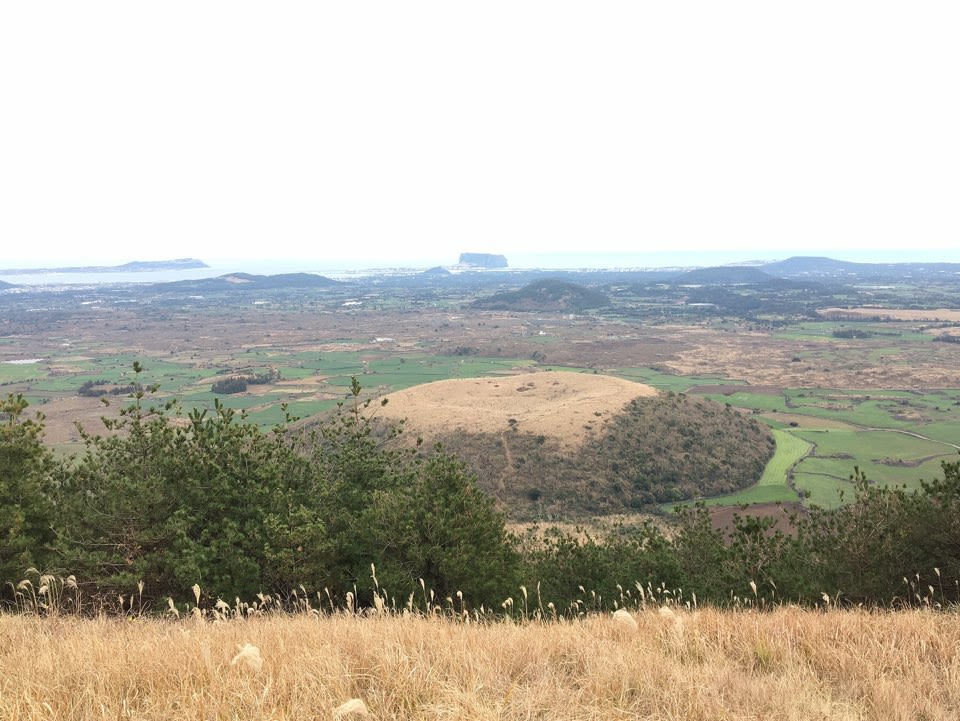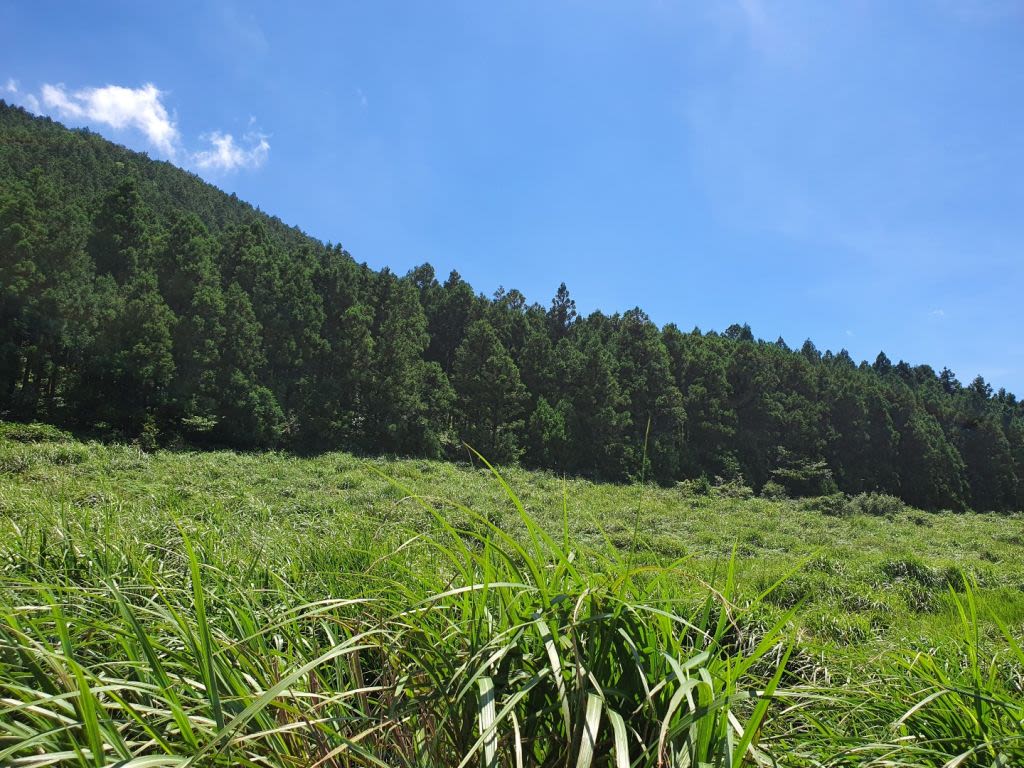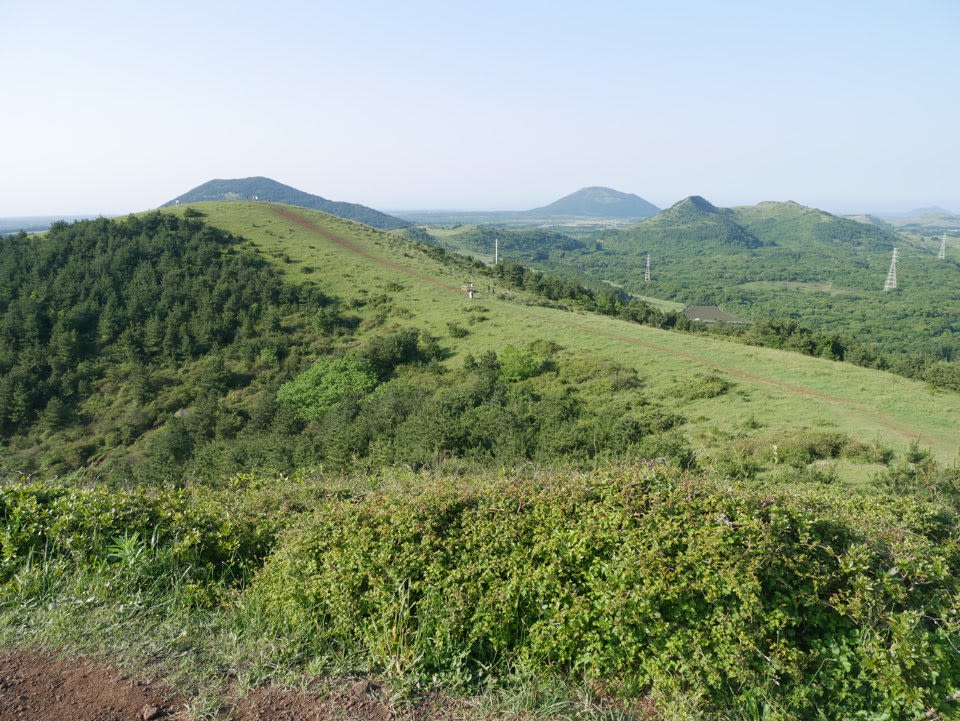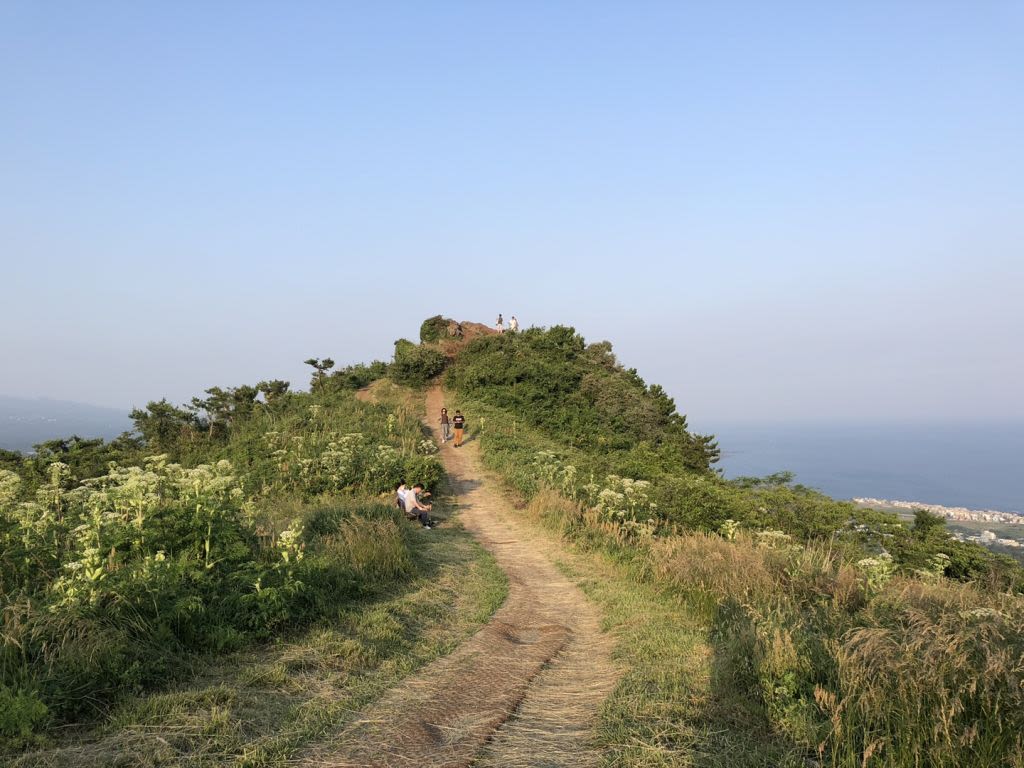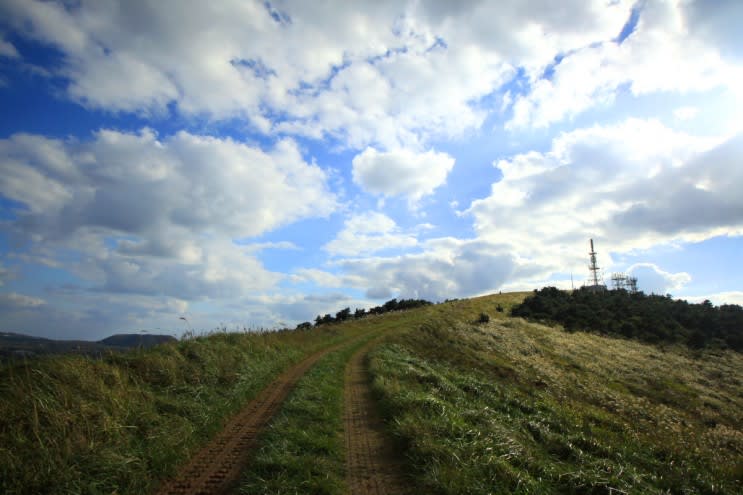Oreums are a must-visit when traveling to Jeju. They offer stunning views of Jeju's beautiful natural scenery and are beloved by many travelers. If you're planning a trip to explore Jeju’s Oreums, consider mastering them with our help.
What is Oreum?
There are large and small hills in Jeju around Hallasan Mountain. These hills are called 'Oreum' in Jeju dialect. Oreum is a baby volcano cone caused by a small eruption due to the remaining heat after the eruption of Hallasan Mountain. There are a total of 368 Oreums all over Jeju.
Oreums feature diverse characteristics such as grasslands, natural forests, and wetlands, making them habitats for various plants and animals. They also have significant tourism value, serving as both a place for observing nature and a viewpoint for enjoying the surrounding landscapes. They also play a crucial role in the lives of Jeju residents by blocking winds and replenishing groundwater, providing a clean water supply.
- Circular shape
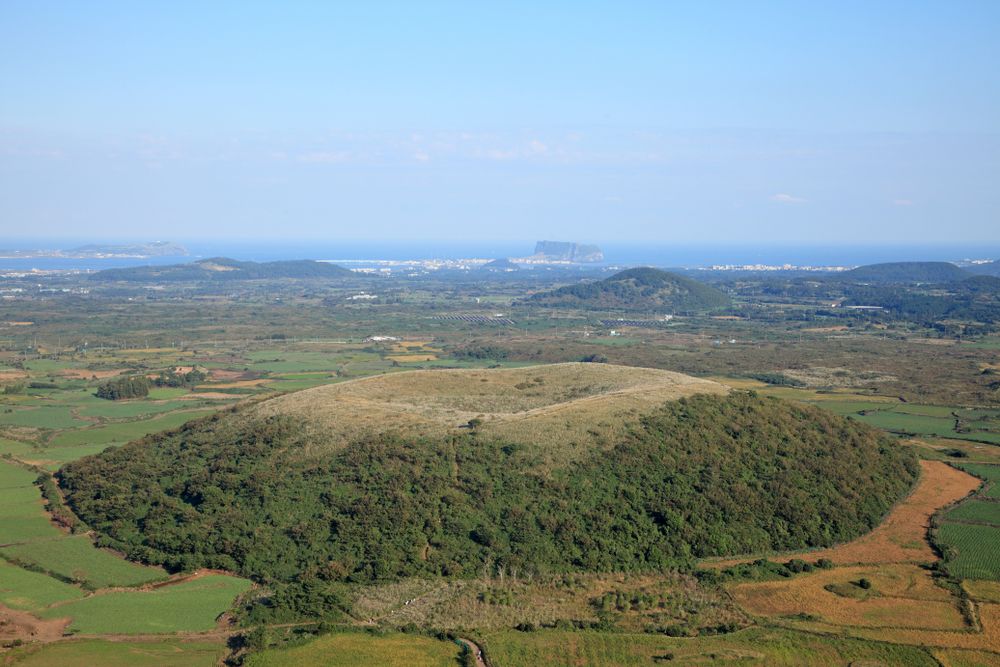
shutterstock.com
An Oreum with a round crater
- Cone shape
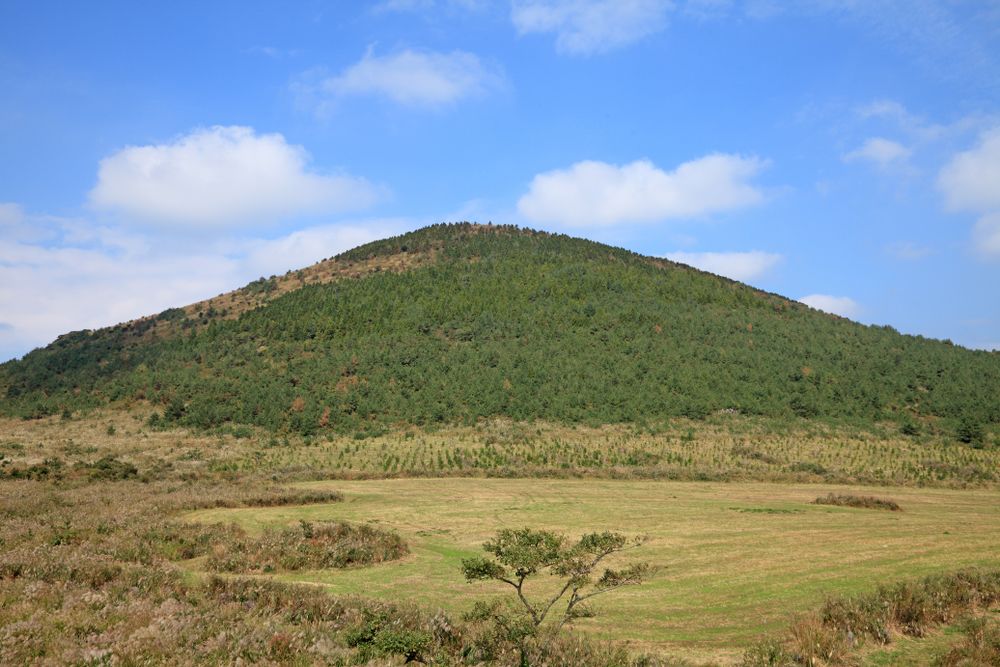
shutterstock.com
An Oreum in the shape of a cone without a crater
- Horseshoe shape
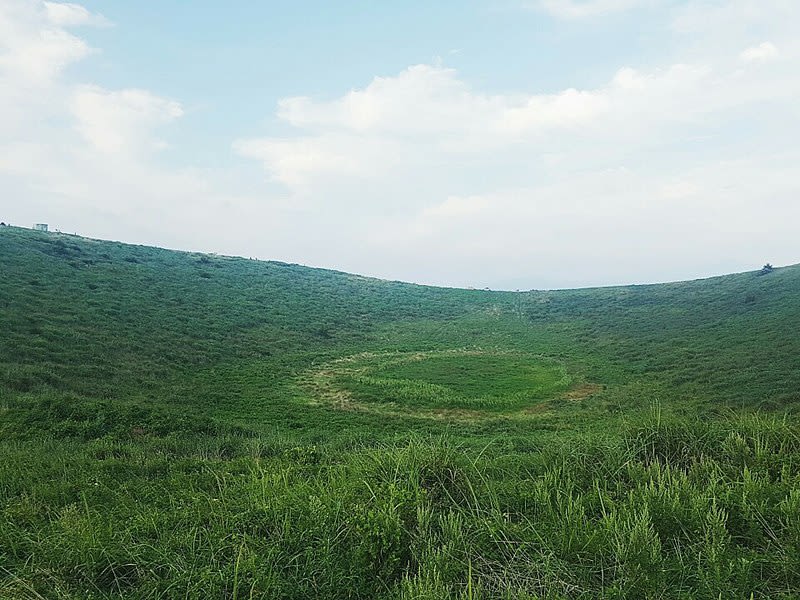
https://commons.wikimedia.org/wiki/File:Geumoreum(%EA%B8%88%EC%98%A4%EB%A6%84).jpg
An Oreum that is horseshoe-shaped when seen from above
- Mixed shape
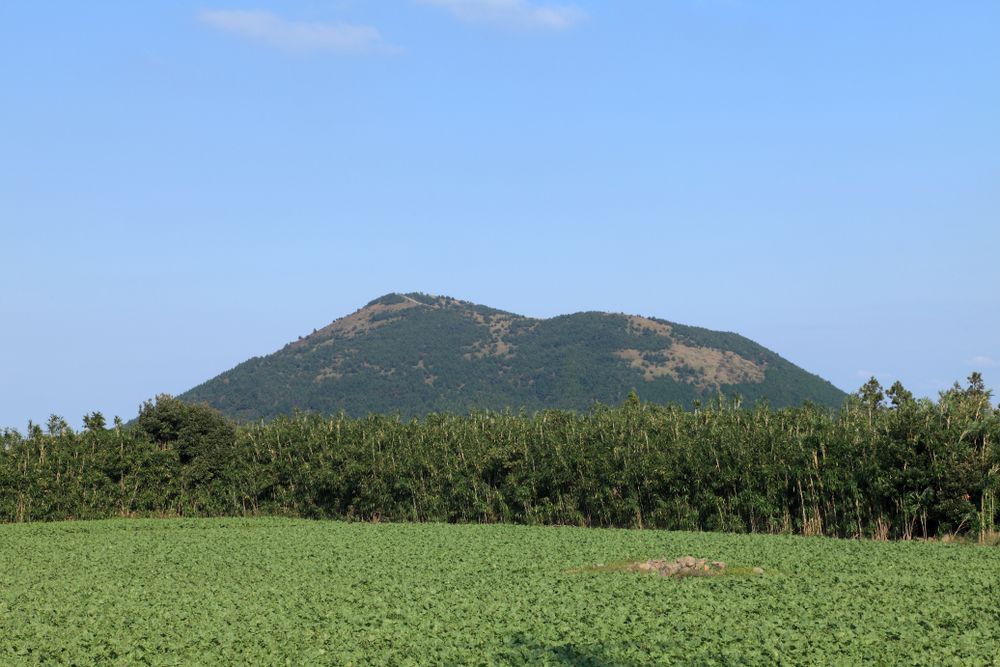
shutterstock.com
An Oreum with multiple craters and ridges
Why travel to Oreum?
If you want to enjoy the natural scenery of Jeju in a short time, head to an Oreum. You can reach the top of most Oreums within about an hour, allowing you to enjoy Jeju’s beautiful scenery from the summit. Many offer pristine natural beauty and breathtaking views. They also make excellent spots for witnessing both sunrise and sunset in Jeju.
Tips for Oreum trip
It is important to choose an Oreum that has a course that suits your fitness level. Oreums tend to be less difficult to climb, there are some steep slopes. The second thing to consider is the schedule. All the Oreums guarantee wonderful scenery and nature, so choose the nearest one according to your itinerary. Schedule your trip accordingly to enjoy sunrise or sunset. Visit one in the east to see the sunrise and one in the west for the sunset.
· Comfortable trekking shoes or sneakers · Fan or portable fan to cool yourself down · Sunglasses and sunscreen to protect your eyes and skin from UV rays · Windbreakers or cardigans to block the wind · Water to quench the thirst · Snacks such as chocolate and fruits to munch on
Recommended Oreums
Often referred to as the "Queen of Oreums" due to its elegant balance resembling a Hanbok skirt, this Oreum offers breathtaking views from every direction. You can see Jeju's stunning landscapes from the east, where Seongsan Ilchulbong Tuff Cone and Udo Island are visible; to the north, where Bijarim can be seen; to the west, where Hallasan Mountain stands; and to the south, where Yongnuni Oreum is located. Although you’ll need to climb steep stairs, the effort is well worth it. The crater at the summit resembles a round moon and has a depth similar to Hallasan Mountain’s Baekrokdam.
· Level of difficulty: ★★★★☆ · Hike time: About 30 minutes
If Darangswi Oreum is too high, check out Akkeundaranswi Oreum right next to it. Although it is a low Oreum where you can reach the summit in about 10 minutes, you can see the Darangswi Oreum and the Jeju sea at a glance. In autumn, it is covered with silver grass.
This Oreum, the first in South Korea to be designated a UNESCO World Natural Heritage site in 2007, is a representative example of a horseshoe-shaped Oreum in Jeju. It is renowned for its geological significance, showcasing volcanic terrain and lava tubes. To protect the natural environment, visitor numbers are limited to 450 per day, and reservations are required for access. The trails offer three routes: the Summit Course, the Crater Course, and the Full Course, each guided by an escort. The Summit Course takes you through a dense cedar forest to a peak where you can see Hallasan Mountain, Mulchat Oreum, and Min Oreum. The Crater Course allows you to view the crater, while the Full Course provides a comprehensive exploration of Geomun Oreum.
· Level of difficulty: ★★★☆☆ (for the normal course, varies depending on the course) · Hike time: About an hour (for the normal course, varies depending on the course)
· Telephone and online bookings are accepted on a first-come, first-served basis starting at 9 AM on the first day of the month before the intended visit. For example, if you wish to visit on May 10, you need to book on April 1. Same-day reservations are not available. · The site is closed every Tuesday for nature rest days. · Every July, the Goejok Oreum International Trekking event takes place over nine days. This event features walking activities along with various performances and programs. Notably, the 'Lava Path,' showcasing lush forests, is only open during this period.
Located in the west, this Oreum is a popular spot for sunset viewing among travelers. In autumn, the silver grass covering the Oreum turns golden in the sunset, creating a stunning sight. From the summit, you can enjoy views of Biyangdo Island to the west. Additionally, you'll find traditional Jeju graves and the iconic "Lonely Tree," a popular photo spot on Saebyeol Oreum.
· Level of difficulty: ★★★★☆ · Hike time: About 30 minutes
It can be hard to get to the top because the slope is steep. When viewing Saebyeol Oreum head-on, the path on the right side is gentler compared to the left side, so keep that in mind.
The path to the summit is lined with wooden stairs and has a gentle incline, making the ascent easy. It's conveniently located near other famous Jeju attractions such as Seongsan Ilchulbong Tuff Cone and Bijarim, so it's a great stop on your way. At the top, you can also view nearby Oreums like Munsuki Oreum, Yongnuni Oreum, and Sonji Oreum. On clear days, you can even see Seongsan Ilchulbong Tuff Cone and Udo Island.
· Level of difficulty: ★★☆☆☆ · Hike time: About 20 minutes
· Baekyaki Oreum will have a natural rest period until July 31, 2024. Only the trail leading up to the summit is open for visitors. · The main photo spot at Baekyaki Oreum is where you can capture the view of the stairs extending upward from below. Especially in summer, the Oreum covered in green provides a picturesque backdrop, making it a popular photo spot.
One of the most recently formed Oreums in Jeju, standing at an elevation of 334.5 meters. Although it is quite high, you can drive almost to the summit. It takes about 5 minutes to walk from the parking area to the top. Once you reach the summit comfortably, you can enjoy panoramic views of Jeju, including Hallasan Mountain, the coast of Seogwipo, Beomsom, Gapado Island, Marado Island, and Sanbangsan Mountain.
· Level of difficulty: ★☆☆☆☆ · Hike time: About 15 minutes
If you're not confident in your driving skills, it's recommended to walk up to the summit. The road to the top is narrow, and if a vehicle is coming down, you will need to reverse to make way. Walking up will take around 30 minutes.
An Insta-famous Oreum with popular photo spots. The star is a mountain crater lake known as the "small Baekrokdam." The wide expanse of grassland and blue sky create a stunning backdrop for photos. After it rains, the sunken area fills with water, enhancing its beauty. From the summit, you can take in views of Saebyeol Oreum, Biyangdo Island, and Hallasan Mountain.
· Level of difficulty: ★★★☆☆ · Hike time: About 15-20 minutes
Visit here together!
Gallery created by a photographer who loved Jeju. Despite suffering from Lou Gehrig's disease, he transformed the abandoned Samdal Elementary School into a gallery in 2002. The gallery showcases photographs by Kim Younggap, who captured Jeju's landscapes for over 20 years. Most of the photos depict the Oreums' changing appearances through the seasons and different times of the day. Inside, there is an unmanned tea house and an art shop where visitors can purchase small souvenirs.

